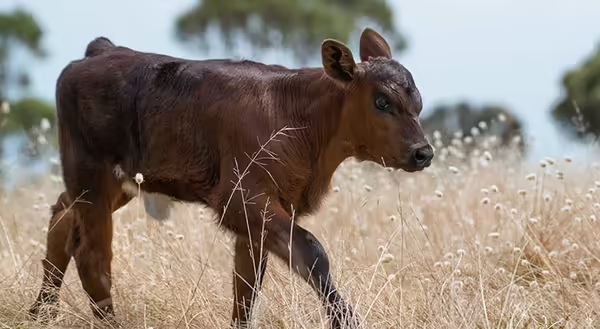
Authored by Ashley Cooney, Intern, University of Illinois Orr Beef Research Farm. At the Illinois Beef Association's Summer Conference, I had the chance to talk to producers and learn about how they operate their farms. One conversation with a producer stuck out to me and got me thinking. The producer's cow-calf operation had two calving seasons: fall and spring. My conversation with the producer led me to a comparison of the calving seasons and which one could be the most ideal.
Producers should consider the advantages and disadvantages of spring calving when deciding when to calve. One advantage to spring calving is that during peak lactation cows have plenty of forage that can meet nutrient needs. Another advantage is that during the winter time when the cow is dry, she will not require a massive amount of high-quality feed. One of the disadvantages to spring calving would be unpredictable weather and cold temperatures during calving. Another disadvantage is that conception rates can be lower due to the hot weather. Spring born calves tend to have a lower weaning weight due to there not being enough good quality forage. The final drawback with spring calving is that selling prices of the spring-born calves tend to be about four percent lower than the annual average price.
Producers should also consider the advantages and disadvantages of fall calving. An advantage to fall calving is that the market price for these cattle is about four percent above the annual average price. This is because the demand is high, but the supply is low. Another positive is that the cows generally have a higher body condition at breeding, which will allow earlier breeding at higher rates. Also, the weather is more predictable come calving time. One disadvantage of fall calving is that the producer will have a higher winter feeding cost. This is because the cows will be lactating in the winter and will require a higher nutritional need. Another problem to consider is that the colder temperatures and snow can be harder on the calves' health. Producers should also keep in mind that it might be harder to find labor to help with the calving.
Some advantages can come from having two calving seasons instead of one. One advantage would be that the bull would be used twice in a year which would make the bull cost decrease. Another positive would be that you are spreading the market risk out by selling calves at two different times. One thing a producer should keep in mind is that if they decide to have two calving seasons instead of one, they need to make sure that they have plenty of calves being born during both seasons to avoid being discounted from having a small lot size.
Depending on forage and labor facilities, producers may benefit from having two calving seasons as you get more use out of the bull and the market and be able to benefit from the advantages of both seasons. However, producers need to look at the disadvantages and advantages of each calving season and decide what is best for them and their operation.
Sources:
Oklahoma State University, J.C. Hobbs https://view.officeapps.live.com/op/view.aspx?src=http%3A%2F%2Fwww.agecon.okstate.edu%2Franchecon%2FSession3%2FSpringvsFallCalving.doc
University of Nebraska-Lincoln Beef
https://beef.unl.edu/cattleproduction/calvingseasons2009
Progressive Cattleman
Cattle Today